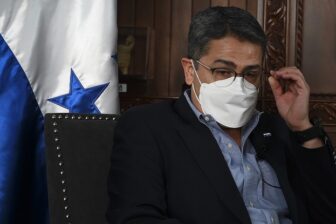Globalization might be facing closer scrutiny, but regionalism is resurgent. Everywhere, powerful countries have been strengthening ties to their smaller neighbors. Everywhere, that is, except in the United States, which has too often viewed its neighbors – Mexico, Central America and the Caribbean islands – as problems to be managed rather than as diplomatic and economic opportunities to embrace.
In contrast, the European Union has invested heavily in Eastern Europe and the Balkans, fortifying supply chain linkages between the more developed West and the formerly socialist East. China is strengthening its regional ties through its well-funded Belt and Road Initiative and by signing the 15-nation Regional Comprehensive Economic Partnership last year. Vladimir Putin is marshalling all instruments of foreign policy to re-create the Russian Empire in his “near abroad.”
In Central America and the Caribbean, a region known as the Greater Caribbean Basin, our own neighbors are struggling with stagnant economies, severe social distress (even before the COVID-19 pandemic), failing governance and recurrent natural disasters and climate change. Frightened local elites park their wealth in overseas bank accounts, while the poor flee to market their labor for better wages abroad.
To its credit, the Biden administration is gearing up to launch a $4 billion (over four years) foreign assistance surge to Honduras, Guatemala and El Salvador, the main sources of migrants pressing on the U.S. southern border. But traditional aid programs, even if admirably adjusted to focus more on governance shortcomings, including anti-corruption, are unlikely to bring democratic stability, let alone sustainable prosperity to these countries.
However, a more ambitious and creative program could offer an historic opportunity to turn the Greater Caribbean Basin into a significant geographic asset for the United States.
The Biden administration is advancing a rich economic and social domestic agenda: clean energy, climate change mitigation, efficient infrastructure, technological innovation, more inclusive access to health care and job training, support for small- and medium-sized businesses, and ambitious governance reforms.
A similar regional agenda could transform the Greater Caribbean Basin and amplify the impacts of Biden’s domestic investments.
If the White House incorporates the Greater Caribbean Basin into its domestic jobs and infrastructure “Build Back Better” agenda, it could provide benefits to the region that far outweigh traditional foreign assistance programs – with a potentially dramatic and powerful impact on regional actors and international investors.
The Biden presidential campaign wisely called for including Central America and the Caribbean in various clean energy initiatives and programs promoting climate change adaptation and resilience. Partner nations would work together to develop a comprehensive strategy to limit greenhouse gas emissions and set common standards for the greening of manufacturing, mining, and tourism, supported by low-interest financing. Relevant U.S. federal and state agencies could offer technical assistance to regional counterparts.
This powerful insight could be applied to other economic growth initiatives. For example, the Executive Order “Made in All of America,” designed to increase manufacturing at home but also in friendly countries, could extend fiscal incentives to promote the production of industrial components throughout the region. A network of innovation hubs would increase the efficiency and resilience of U.S.-based supply chains while bolstering labor markets in countries that are now major sources of immigration.
The U.S. economy would benefit directly from modernized infrastructure in the Greater Caribbean Basin; newer roads, seaports and airports would reduce transportation costs, facilitate cheaper inputs for U.S. supply chains, and lower prices for its consumers. Regionwide planning would avoid wasteful duplication, instead selecting projects that better connect nations and bolster a spirit of common purpose. Again, relevant U.S. federal and state agencies could offer technical assistance, including procurement codes that guard against clientelism and corruption.
Biden’s domestic educational programs could also expand to catalyze multiple partnerships between U.S. and regional educational institutions. State-level community colleges in the United States could offer expertise and funding to train the next generation of skilled workers and middle management throughout the region. Large-scale student exchange programs would lay the foundations not only for deeper cross-cultural appreciation but also for future business partnerships. Labor mobility could be facilitated through accredited trans-regional training programs and internships.
Higher quality education in the region would lead to higher productivity and wages, reducing migration and improving the competitiveness of U.S. suppliers in the region. Those workers who are admitted to the United States – in some cases possibly through orderly, augmented guest worker programs – would come with more skills and greater preparedness.
The building blocks for an ambitious Greater Caribbean Basin agenda already have been put in place by both Republican and Democratic administrations. A series of trade accords – the Caribbean Basin Initiative and its updated Caribbean Basin Trade Partnership (CBTPA), the Dominican Republic-Central America Free Trade Agreement (CAFTA-DR), and the recently renegotiated United States-Mexico Canada Agreement (USMCA) – already knit together the region’s economies.
To make these trade accords more coherent, without re-opening them to potentially contentious debates, agreements could be negotiated on region-wide rules of origin – degrees of value added required to benefit from trade preferences. Further, the trade accords could allow for cumulation – summing value added along the supply chains within participating countries. These two pragmatic tweaks would encourage supply chains to operate more efficiently and to integrate their operations throughout the Greater Caribbean Basin.
To address skepticism about the growth prospects in Central America and the Caribbean, partnering governments could commit to reforms that would improve the investment climate and ensure the execution of high-quality social and environmental standards. U.S. agencies and private investors could work with multilateral development agencies and local partners, public and private, to fill in remaining gaps in infrastructure, trade facilitation, and job training. These deep commitments could be cemented in a regional agreement unveiled at the upcoming U.S.-hosted IX Summit of the Americas.
Investing in new forms of economic integration in the Greater Caribbean Basin would require a leap in the national imagination and political ambition. It is worth it. Such an initiative would reduce the burdens from violence and underdevelopment so close to the U.S. border and strengthen the U.S. economy, transforming local liabilities into geopolitical assets. It would also deliver a productive counterpunch to Chinese encroachment in our “near abroad.”
—
Feinberg is a professor at the University of California San Diego. He served as senior director for Inter-American Affairs at the National Security Council during the Clinton administration.








